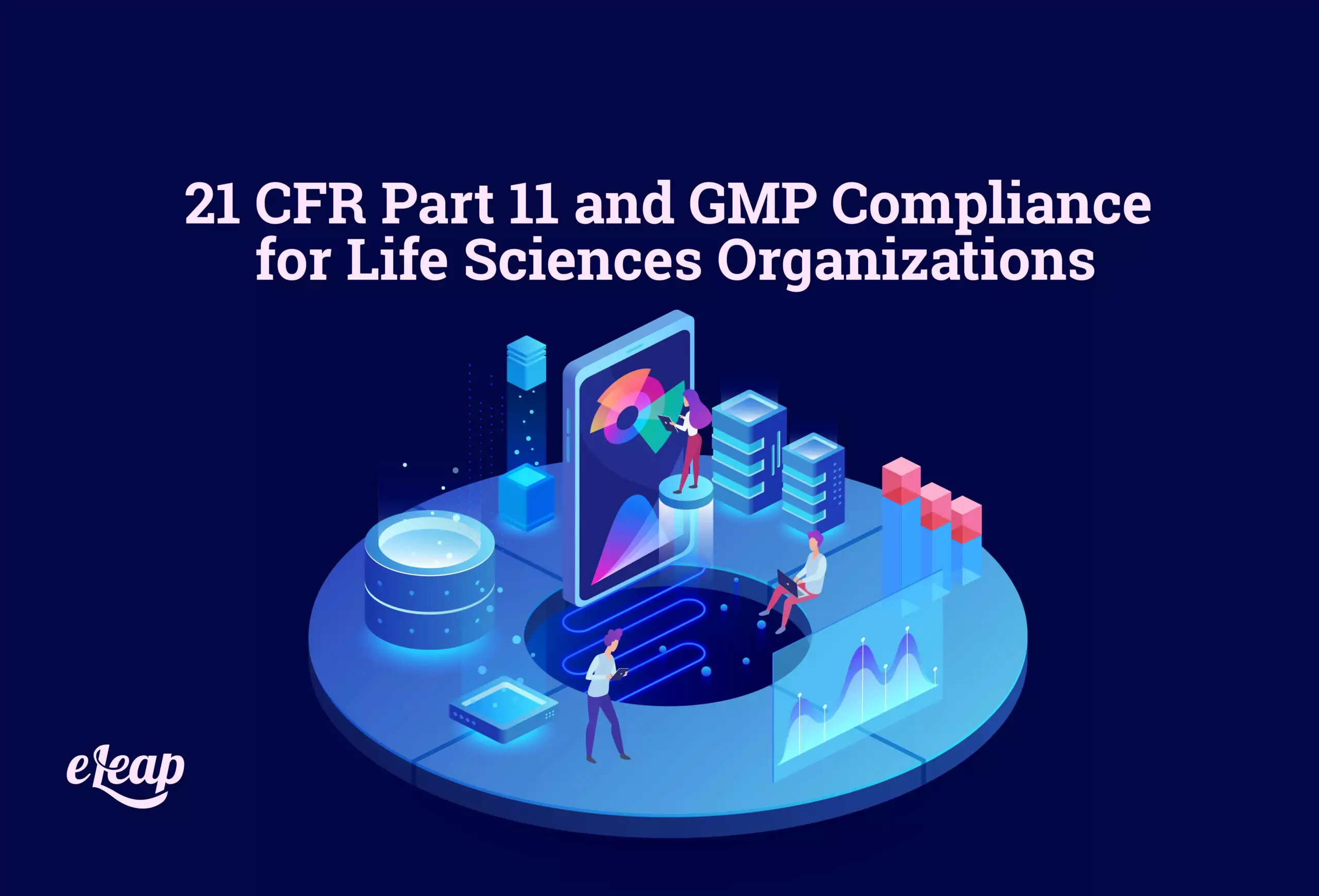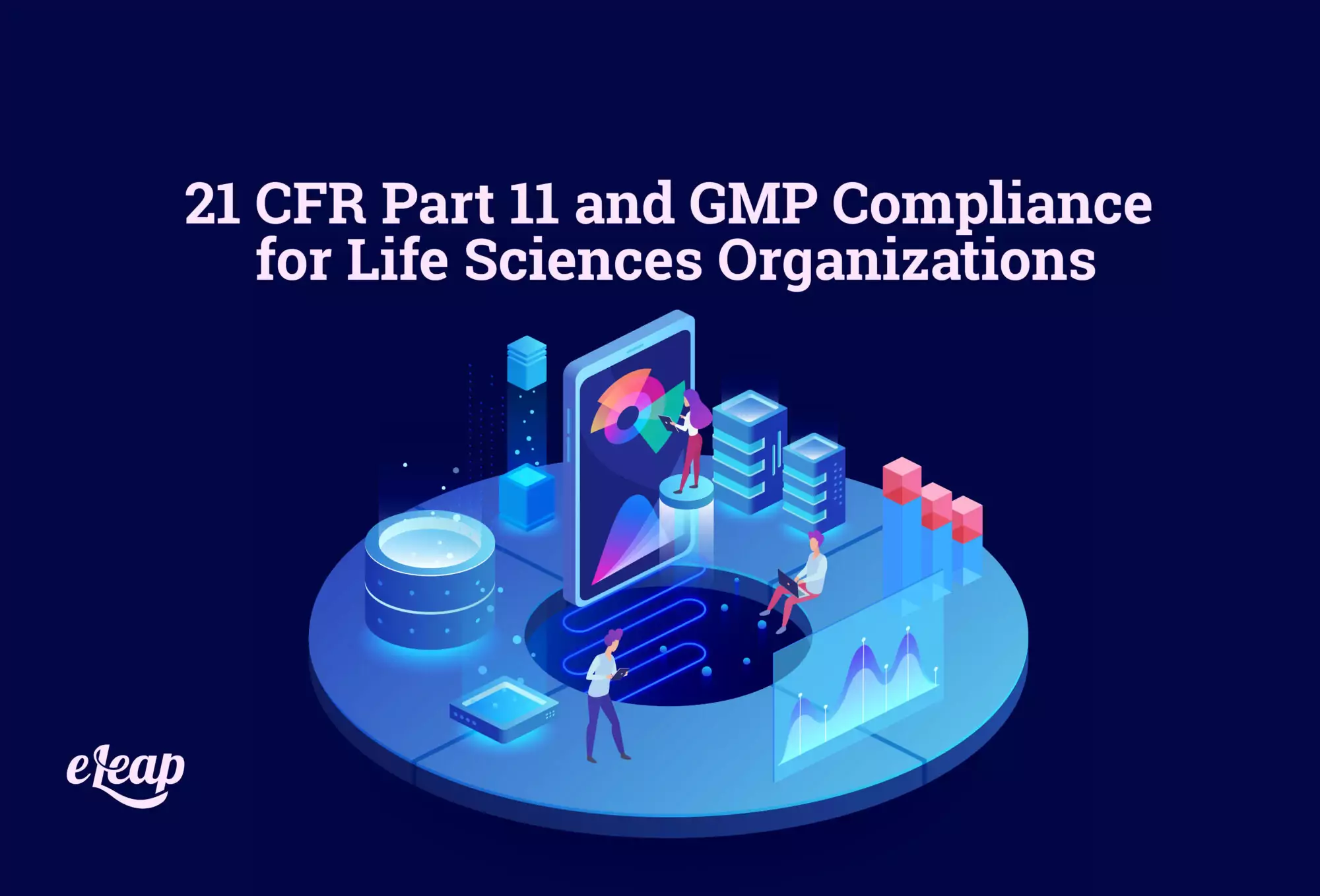21 CFR Part 11 and GMP Compliance for Life Sciences Organizations
What You Should Know About Your Tools

Data security compliance and other FDA guidelines can be difficult to understand, even for the most seasoned of life sciences professionals. Title 21 CFR Part 11 is a regulation that was developed to outline the requirements for electronic records and signatures, including the use and management of them in the modern digital software ecosystem. For organizations that use Good Manufacturing Practice (GMP), adhering to the 21 CFR Part 11 statute is even more crucial.
CFR Part 11 is based on the prerequisite that all systems must be validated according to GMP, or Good Manufacturing Practice. This ensures that everything is up to par and that best practices are used in creating the databases and electronic records systems that are in place. As more brands strive to meet the guidelines to provide Part 11-compliant solutions and tools, it is important to understand how your organization, as a responsible party, should be able to validate and authenticate all of the resources that are being used. Get a free sandbox account to see how eLeaP’s CFR Part 11 compliant system works.

What are Good Practices?
Good Manufacturing Practice is one of the Good Practices guidelines that is relevant to life sciences and other related industries. Other GxP examples include:
- Good Laboratory Practice
- Good Clinical Practice
- Good Distribution Practice
- Good Documentation Practice
GMP ensures that all medical devices, pharmaceutical products, and other regulated products are manufactured and properly controlled according to high-quality standards as a way to reduce the risk of harm to the consumer. Guidelines and rules vary from one country to the next, but every GMP has similar guidelines:
- All items must be consistently produced of high-quality
- All products must be appropriate for their intended use
- Products must meet requirements for marketing or clinical trial authorization
The FDA regularly inspects various manufacturing facilities that produce medical devices, drugs, and other regulated products to ensure that all compliance guidelines are in place. The inspections all follow a singular approach that has been standardized, and each is conducted by a highly trained member of the FDA staff.
What is GMP?
Good Manufacturing Practice refers to the regulations set in place by the U.S. FDA that outline the requirements of those who make drugs, medical devices, and some food products to be safe, effective, and pure. These regulations have quality controls in place and specific guidelines to prevent consumers from contamination, medical device errors, dangerous items or medications, and more. Failure of an organization to comply with GMP can result in jail time, fines, and even recall or seizure of product.
GMP is a very specific set of regulations that your life sciences company needs to be familiar with if you are working in the manufacture, processing, or packing of drugs, medical devices, and relevant food or blood products. It addresses things like:
- Record keeping
- Personnel qualification
- Cleanliness and sanitation
- Equipment verification
- Complaint handling
- Process validation
This is also sometimes known as the cGMP, or “current” GMP, which reminds companies that they must be using the most up-to-date systems and information in order to be in compliance. For example, if someone is still using a 20-year-old system and trying to bring it into compliance, it may never be able to measure up and require replacement instead.
Electronic Records
The biggest hurdle that people have with figuring out Title 21 CFR Part 11 is realizing that it’s such a generalized standard that there really is not a “strict” set of rules about how to manage compliance and maintain proper electronic records. There are guidelines, of course, but in realizing that so many different organizations would be adhering, the FDA left them quite vague so that they were all-encompassing and didn’t require a separate set of rules for each industry.
Thus, many people aren’t even sure if this compliance topic is relevant to them or if they have to comply. If you are dealing with electronic records and signatures in the life sciences industry, you must be compliant with CFR Part 11 in order to avoid serious repercussions.
Audit Trails
Another part of this regulatory guideline, and one that often points out those who aren’t in compliance, is that audit trails must exist. Part of the electronic records process must include digital (electronic) signatures that advise who accessed the system when the access occurred and what the reason was for doing so.
Although the exact parameters of an electronic signature can vary from one organization to the next, these three elements must be in place in order for the signature to be considered valid and legally binding. The idea is that if you know who has been in the system and why, it will be easier to track records and paper trails when something goes wrong or comes up missing.
Of course, in an ideal world you would only need audit trails to help you show the FDA or other regulatory authorities that you do have the proper procedures in place for electronic records and keeping secure information in the digital space.
Take Advantage of the Tools
You always want to take advantage of the latest resources and tools that are available to help you with things like compliance. This includes when it comes to training your employees and helping them understand regulatory issues and their role in them. Having a compliant Learning Management System, or LMS, will be a good start.
Your LMS is a great training tool, and for people just coming into the company or just getting their feet wet with compliance, hands-on experience is often a great way to learn. Here, you can incorporate all of the elements of GMP and Title 21 CFR Part 11 that your employees need to know in order to help keep your organization safe.
When you work with eLeaP, you’ll get the dedicated assistance of a team that is committed to providing people with the tools and resources that they need for compliance with CFR Part 11, GMP, and other Good Practices guidelines. Plus, you’ll have the support to build a custom solution for your LMS needs, no matter what your life sciences organization requires.